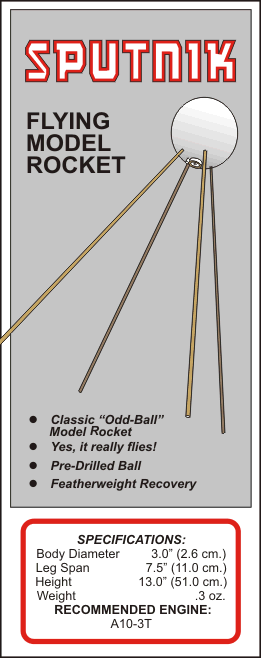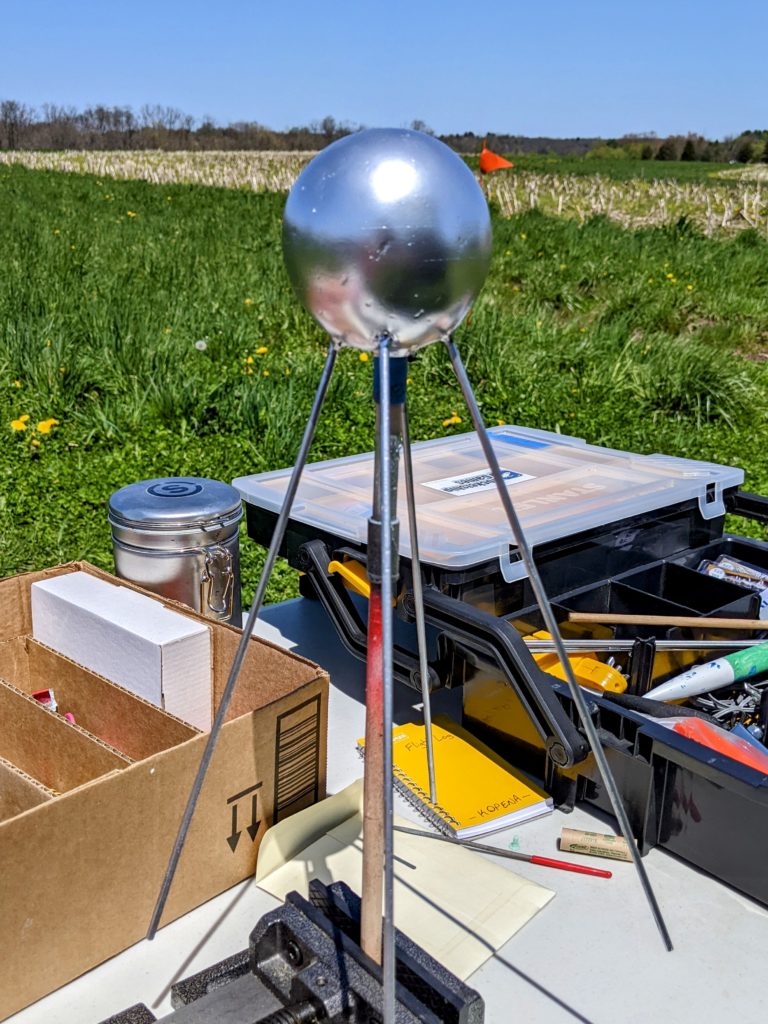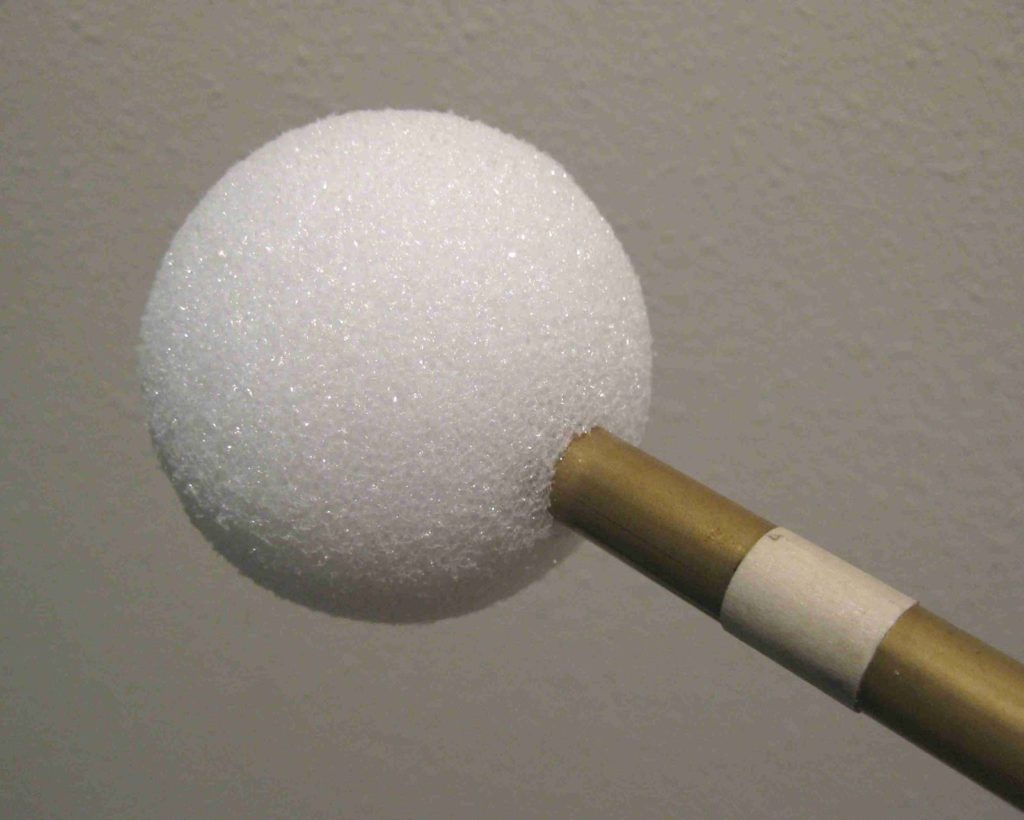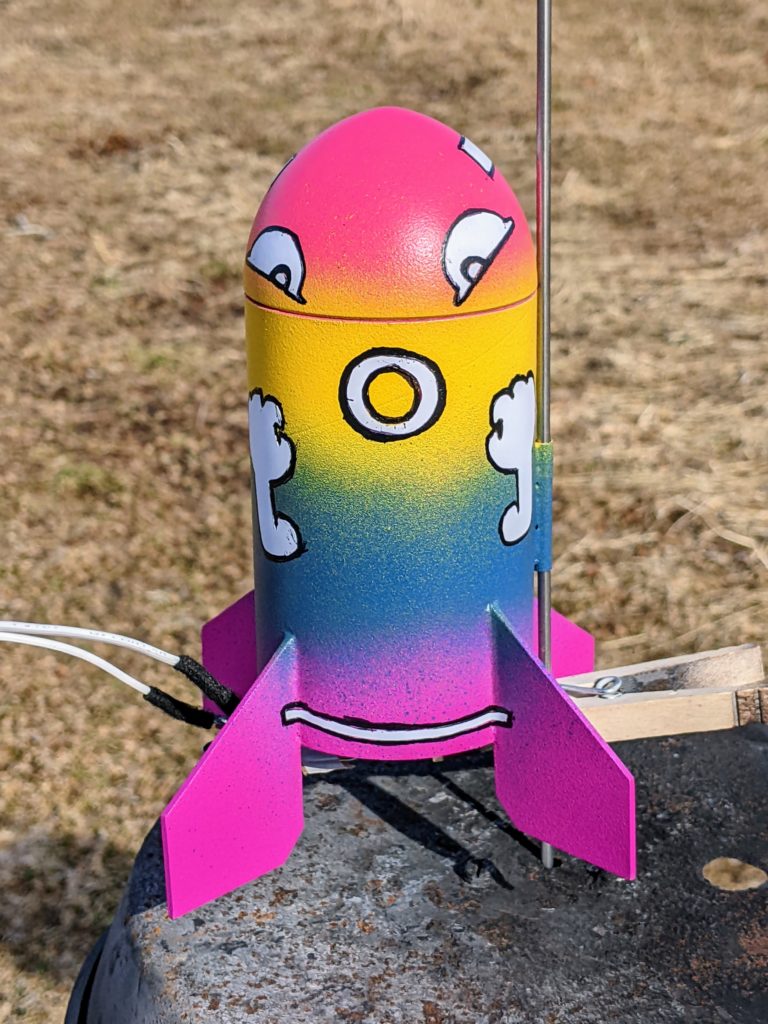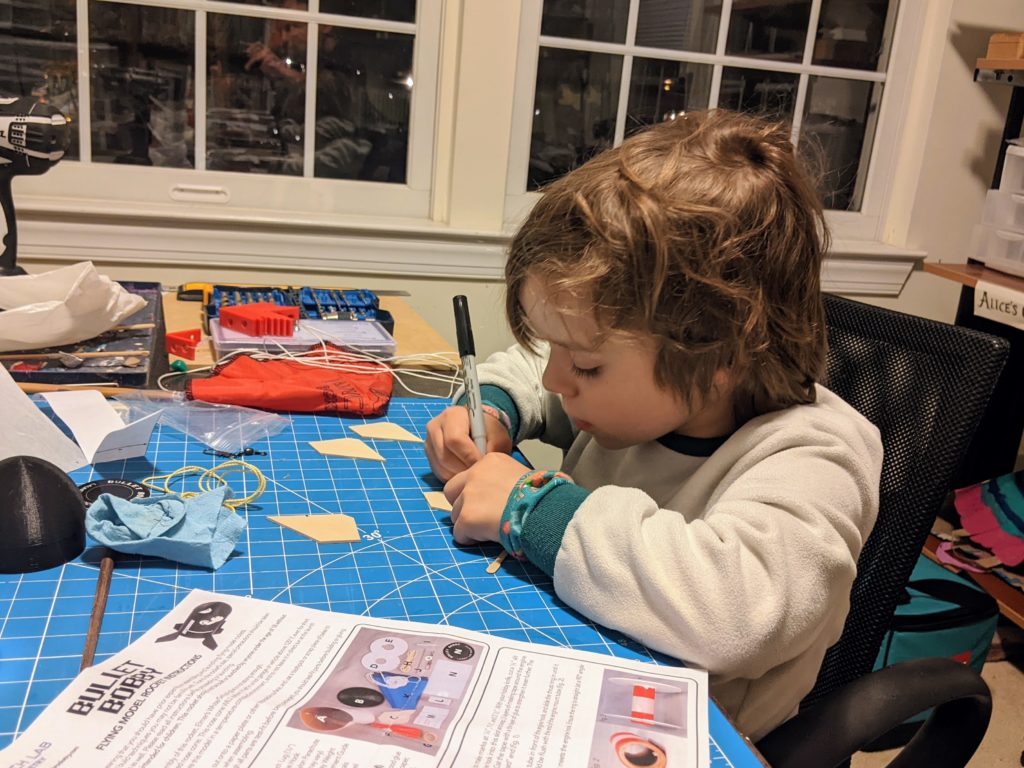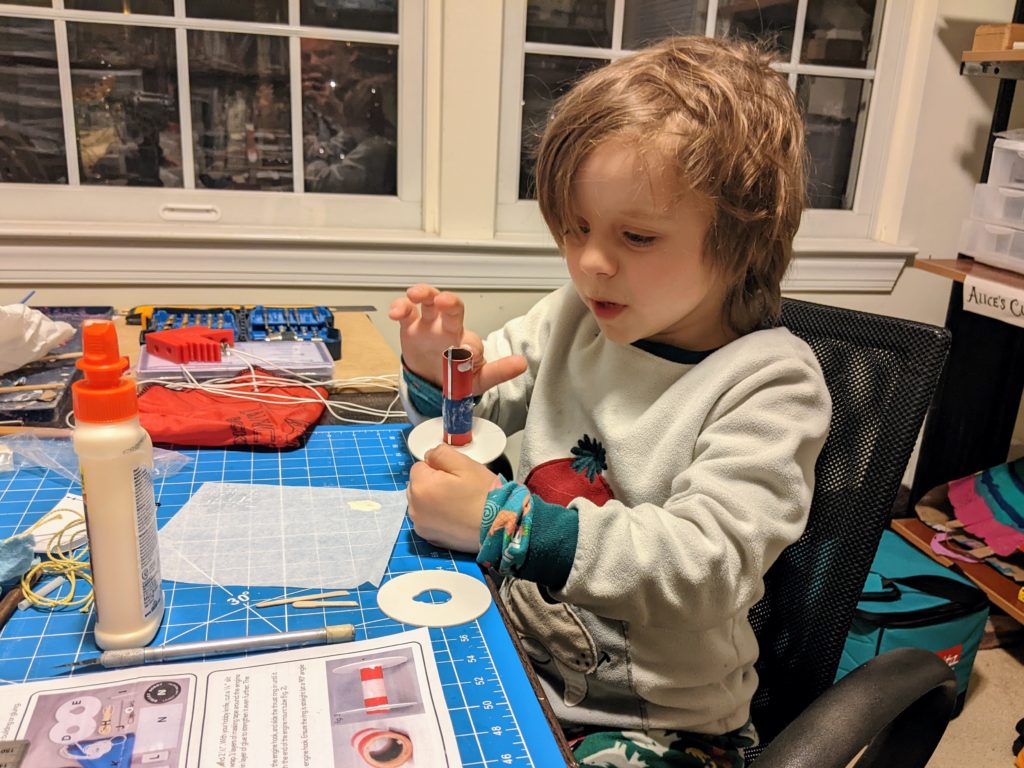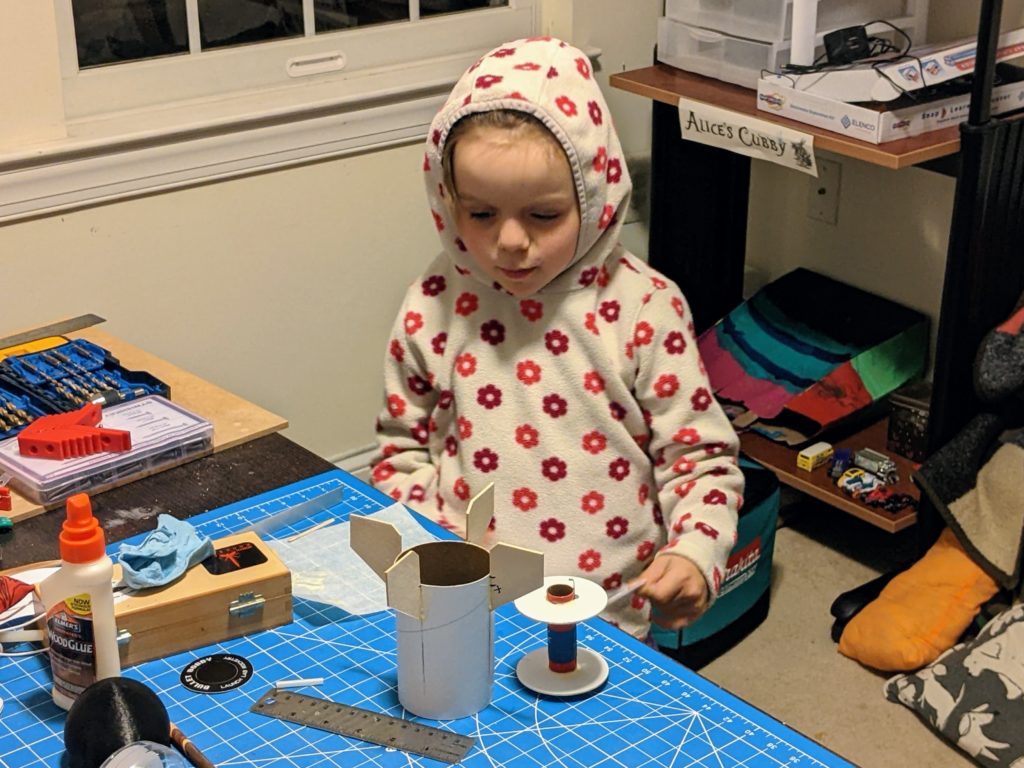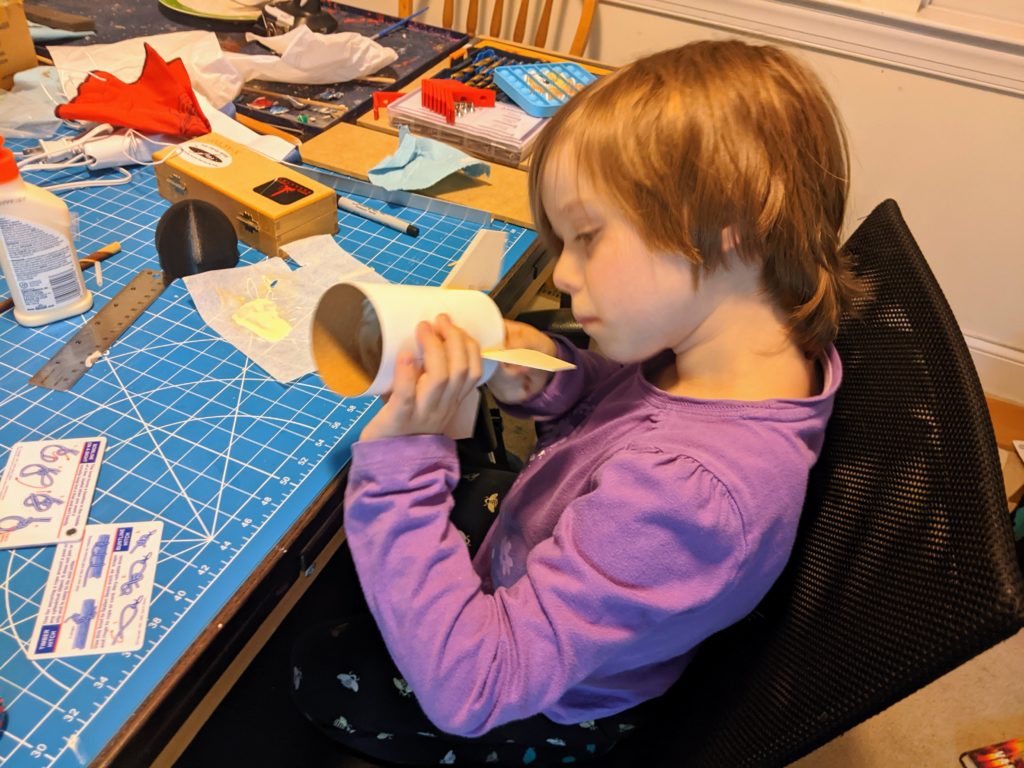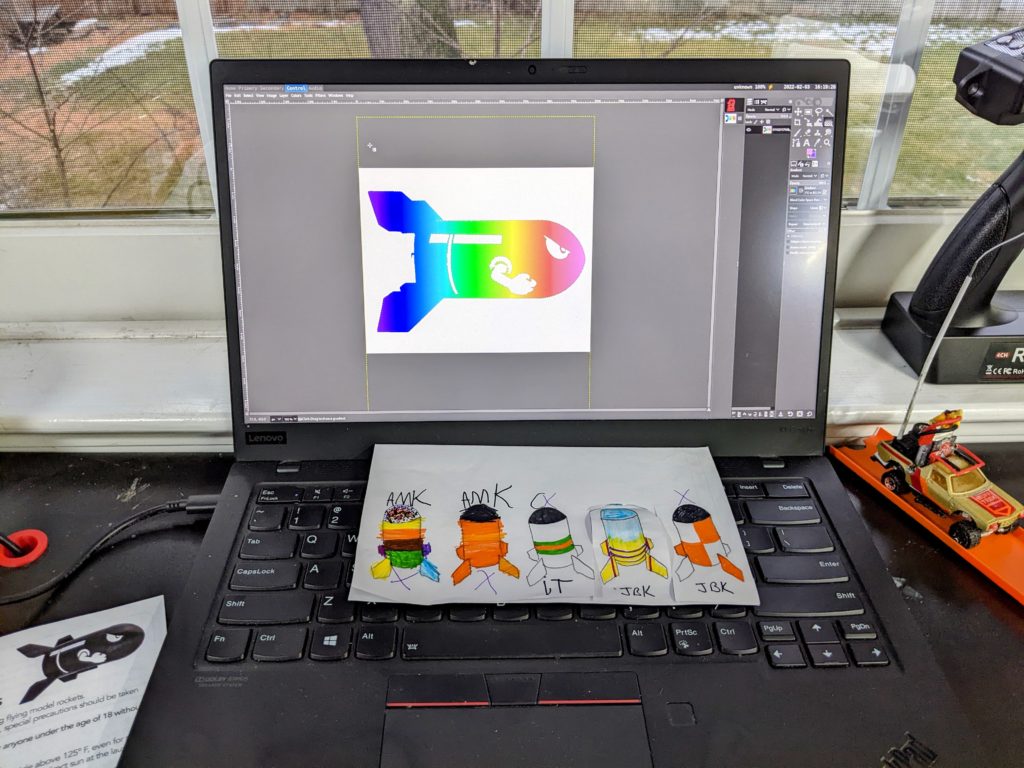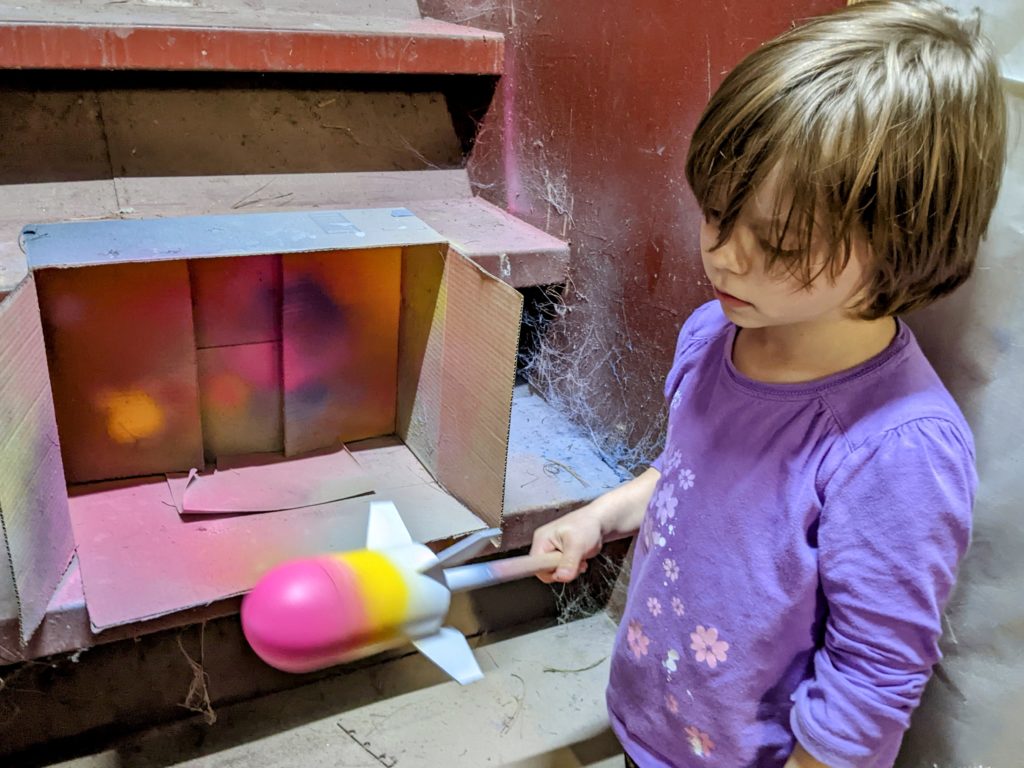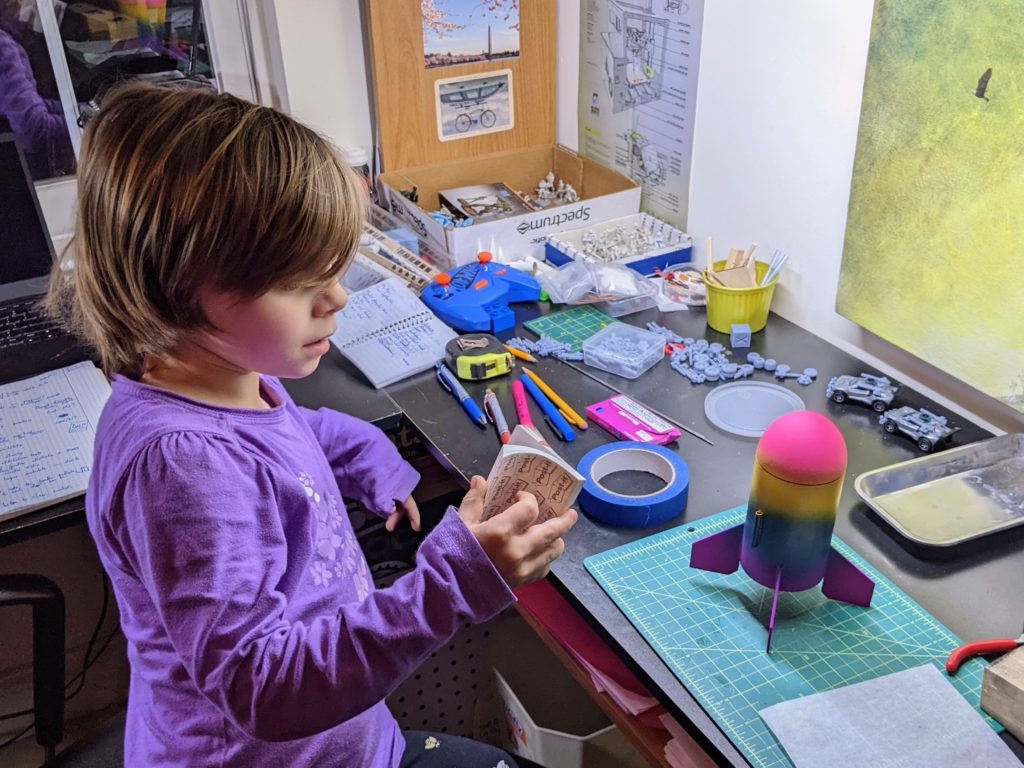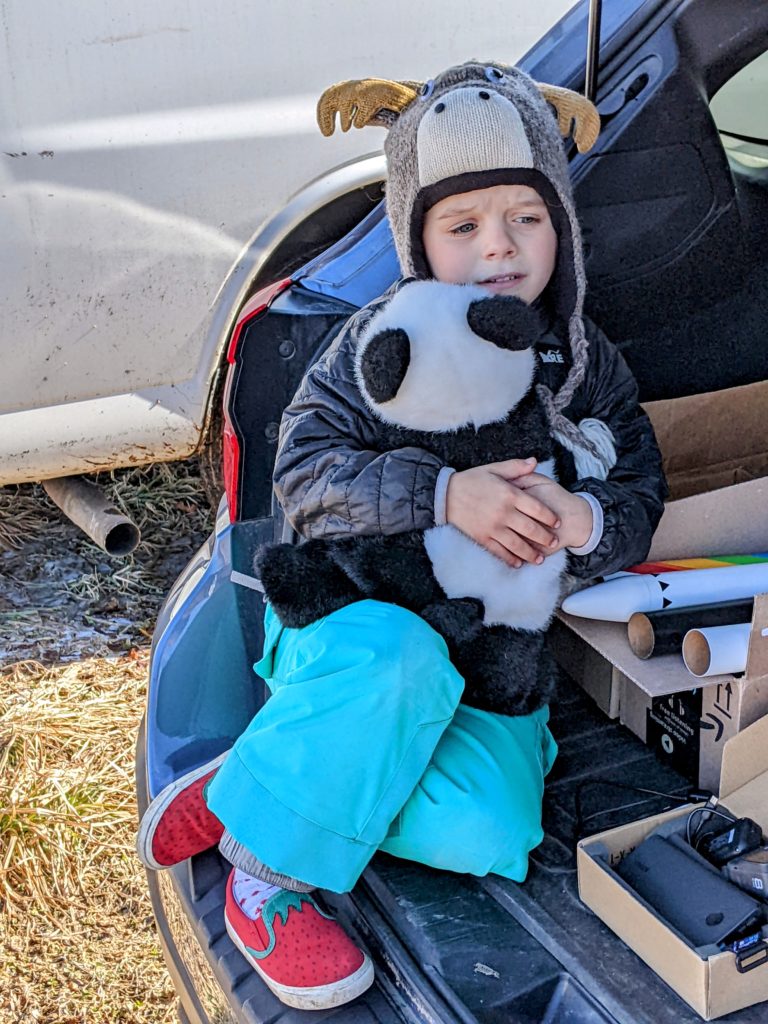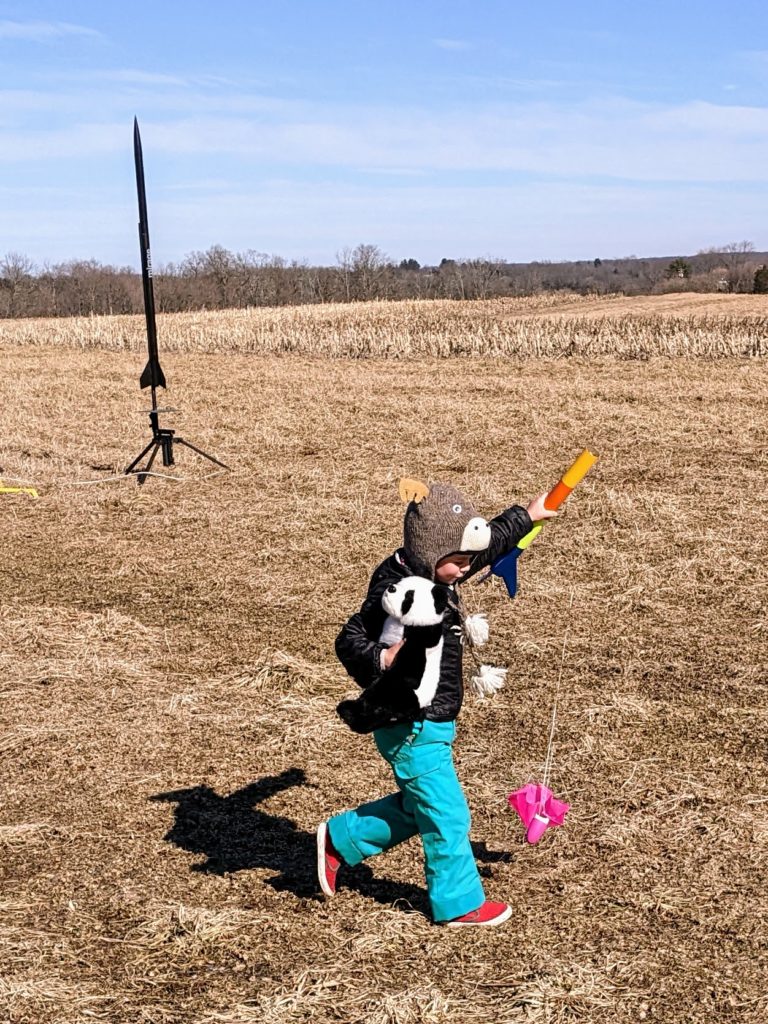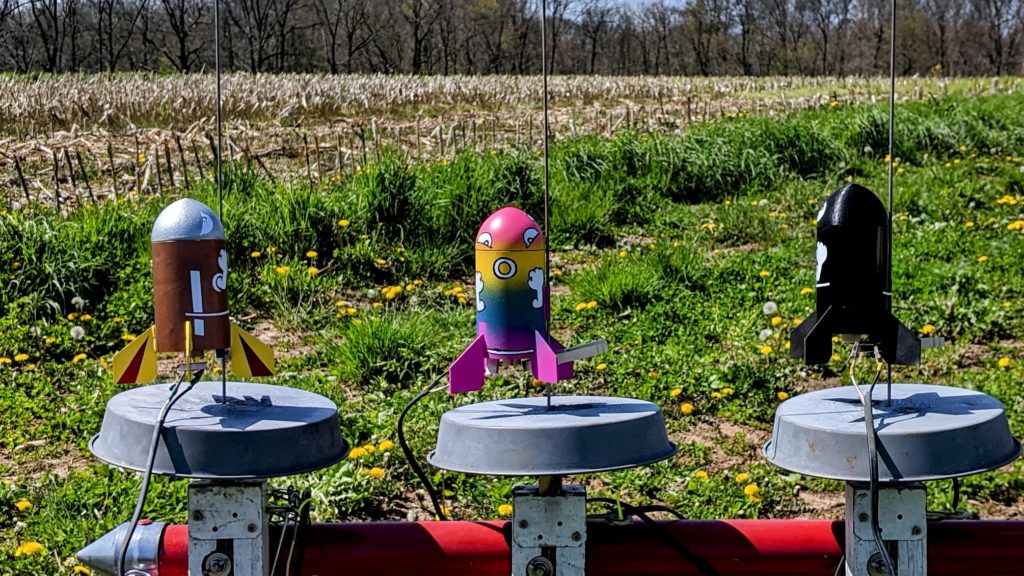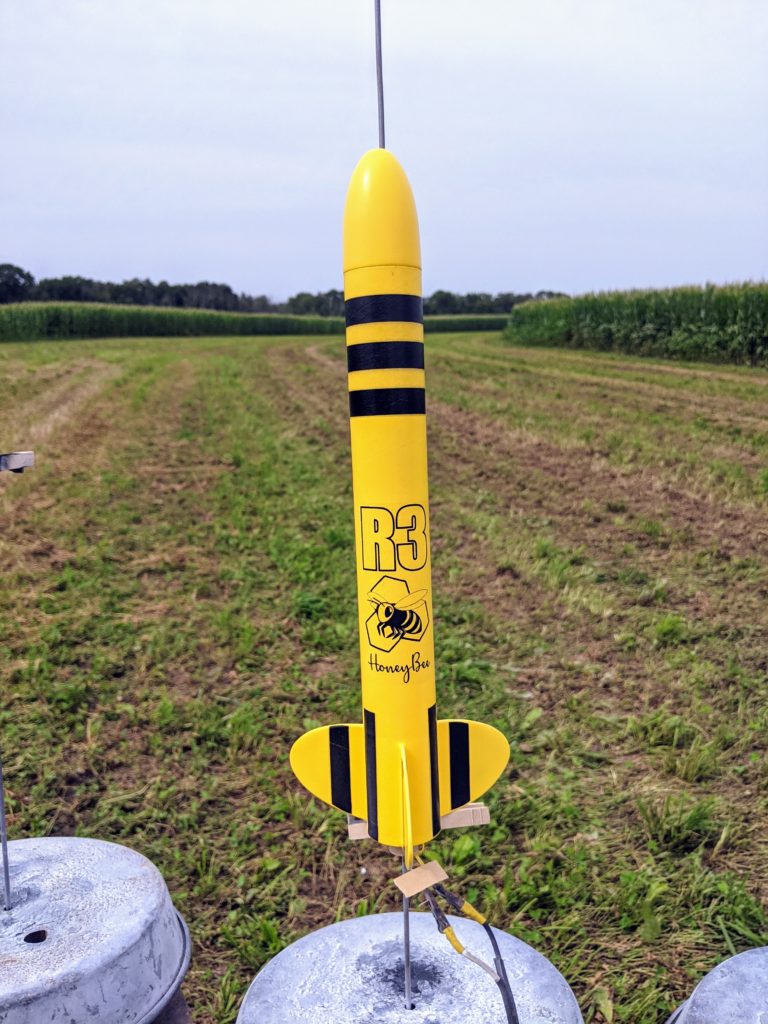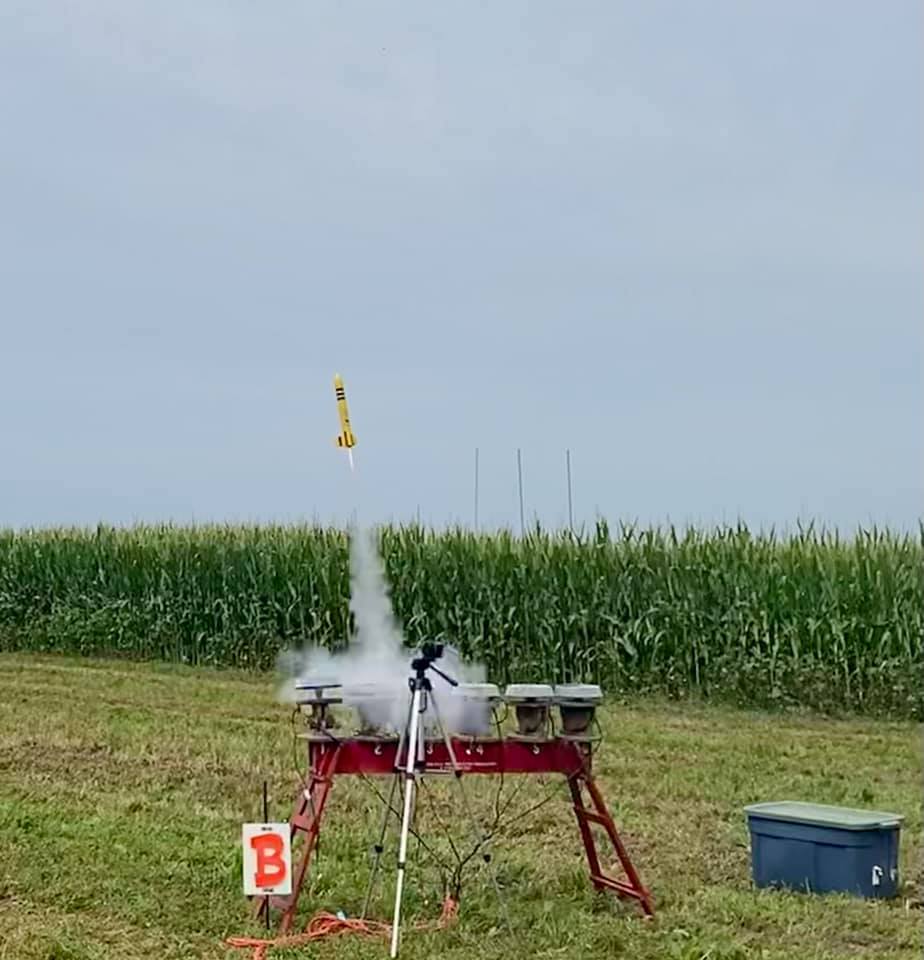Odd’l Rockets makes a cute little kit called Sputnik that’s real fast to build, flies well & easy, and is just a lot of fun. It’s a classic design of four dowels or bamboo skewers glued into a styrofoam ball with an insulating tube into which the motor is shoved.
Typically these rockets are flown with no or minimal finishing. Most spray paints dissolve this kind of foam, so it takes some extra effort to paint, and flying au naturale keeps the weight very minimal. Building one recently though, I really wanted an actual Sputnik-lookalike smooth, shiny, metallic finish. Here’s what I wound up with:
Not completely perfect, but I ran out of time, and it was getting heavy anyway. The deal here is that the ball is low density styrofoam that’s not smooth, at all.
Getting the look I wanted took a little finishing work:
- Coat of Modg-Podg and sand
- Coat of carpenter’s wood filler and sand
- Coat of carpenter’s wood filler and sand
- Filler primer spray and sand
- Filler primer spray and sand
- Black primer spray
- Black primer spray
- Metallic chrome spray
- Metallic chrome spray
That came out well, but the tradeoff is that the model’s a good bit heavier. It flies up well but doesn’t go as high and lands harder. In its usual unfinished state the design’s featherlight and simply falls down body-first (protecting the legs) and bounces. It might even still be going upward when the ejection charge goes off, giving the rocket an extra boost. The weight of my build means it’s decidedly arced over, coming down comparatively fast, and near the ground already when the ejection charge goes off, hurling it downward even harder. After two flights a notable crack formed in the shell. Still flyable, easily fixable with white glue, and not surprising, but definitely a price paid for aesthetics! In the future I’ll think ahead and order some plugged motors without ejection charges, eliminating that additional impact push.
In any event, despite not being as robust as I might hope, I really like the look of the rocket, it flies well, and was a crowd pleaser at this weekend’s club launch.
